Redarc Tow-Pro Elite Brake Controller w/ Custom Harness - Dash Knob - Off-Road Mode - Up to 3 Axles

 Arrives before Christmas
Arrives before Christmas 

with factory Tow Package
Will this fit?
To see if this custom-fit item will work for you please tell us what vehicle you'll use it with.
- All Info
- Reviews (1672)
- Q & A (0)
- Videos (9)
- Photos
Redarc Trailer Brake Controller - RED52CR
- Electric
- Electric over Hydraulic
- Proportional Controller
- Up to 2 Axles
- Redarc
- Behind-Dash
- Plug-In
- Dash-Mounted Knob
- Single Trailer Only
- Indicator Lights
This is one of our favorite brake controllers, with flawless braking and a tiny dash knob that looks like it came straight from the factory. Its unique off-roading mode helps you handle rough conditions, so get out there and get towing.
Features:
- Proportional - Smooth, safe, and good for your brakes long-term
- Off-road mode - A unique feature that gives you direct control of your trailer's brakes
- Sleek (tiny!) knob blends into your dash - The main unit mounts out of sight behind the dashboard
- Simple controls - Use the knob to adjust the settings, activate manual override, and troubleshoot
- Safe - Meets or exceeds both UNECE R21 and FMVSS 201 regulations for sustainability and safety
- Plug-and-play - Vehicle-specific harness included
- Made in Australia - If it can take the Outback, it can take anything, mate
Specs:
- Application: trailers with up to 2 axles (4 brake assemblies)
- Compatible with electric or electric-over-hydraulic trailer brakes
- Main unit dimensions: 4" long x 3-3/8" wide x 1-1/8" tall
- Control knob dimensions: 1-7/8" long x 9/16" wide x 3/4" tall
- Length without dial: 1-1/4"
- Output voltage range: 9V - 16V
- Output current rating: 18 amps continuous
- Maximum charging voltage: 12V DC
- 2-Year warranty
Off-Road Mode
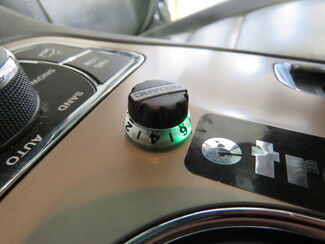
The off-road mode is a unique feature of the Redarc Tow-Pro Elite. In this mode, the brake controller will apply your trailer's brakes with a preset amount of power, independent of what your tow vehicle is doing. This is ideal for off-roading or challenging conditions. Set the power low if you're towing through sand or mud so that the trailer doesn't stop with too much force and act as an anchor. If navigating a steep descent, set the power to a higher level to ensure that the trailer doesn't push against the tow vehicle.
To activate the off-road mode, rotate the knob counterclockwise and apply your vehicle's brakes. Push down on the knob twice (2 times within 1 second) and release the brakes. The knob will turn green to let you know that the mode has been activated.

How to Use Redarc Tow-Pro Elite
Use the knob to set the braking output -- the maximum amount of power that will be applied to your trailer's brakes. To get more power output, rotate the knob clockwise toward 10. To decrease the power output, rotate it counterclockwise toward 0.
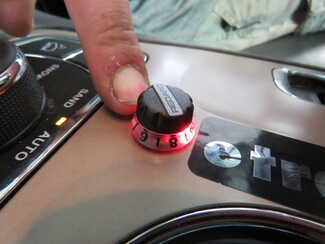
When you apply the tow vehicle's brakes, the knob will change from blue to red to signal that the trailer brakes are being activated. The higher the braking power output, the deeper the red that you will see.
Manual Override
To engage manual override, simply press the control knob. This will activate the trailer's brakes and brake lights independent of your tow vehicle, great for stopping sway or controlling your trailer's momentum in an emergency.
How to Calibrate Redarc Tow-Pro Elite
When you are calibrating the brake controller for the first time, the LED lights will signal your progress.
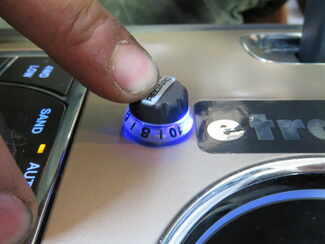
You'll start by braking 20 times or so to let the unit learn its orientation and the direction of travel. You don't need to have a trailer connected for it to calibrate; the only difference is that the knob won't illuminate at all. If your trailer is connected, the LED light will flash green/blue as it calibrates. When the display turns solid blue, initial calibration is complete.
Once done, the unit will remain calibrated. If recalibration is required, it will happen automatically and without LED indication.
How to Install Redarc Tow-Pro Elite
The Tow-Pro Elite has almost no mounting restrictions. It comes in 2 pieces: the main unit and the control knob. The main unit can be mounted out of sight and out of the way. You don't have to worry about dinging your knee on a bulky brake controller or interfering with your vehicle's airbags.
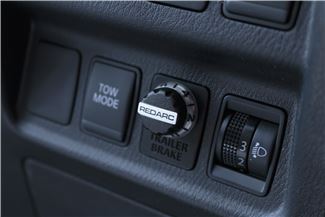
The control knob can be installed in any convenient spot that's easy for you to see and access. This can be a blank switch panel, an open spot on your center console, or wherever there's space on your dashboard. A universal mounting panel is included to ensure a clean, from-the-factory look. Custom-fit panels are available for certain vehicles as well. Before you do any drilling, be sure there's enough clearance behind the dash for the entire knob to install!
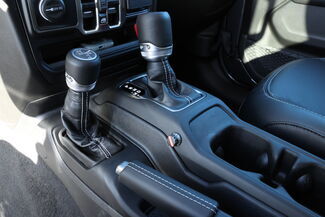
Once you've decided where you want to put the control knob, you'll need to find a good place to install the main unit. Your only restriction is the 3' cable connecting the main unit and the control knob. Securely mount the box using screws, double-sided tape, or zip-ties (not included). A mounting kit (RE67FR - sold separately) is also available for the Tow-Pro Elite. Do not attach the module to wiring or cables that can shift as you drive!

Then plug the custom-fit harness right into your vehicle and the brake controller and you're done!
If you don't already have a 7-way plug at the back of your vehicle, take a look at our exclusive 7- and 4-way brake-control installation kit (ETBC7 - sold separately). A 30-amp circuit breaker kit (331-CBK30-EB - sold separately) may also be required for installation.
For assistance in properly wiring the Tow-Pro Elite, please refer to the diagrams below:
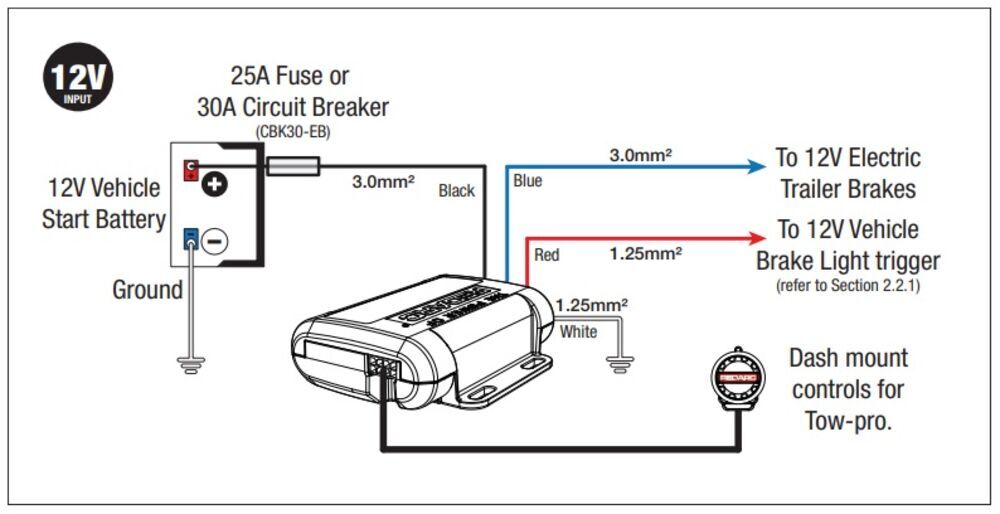
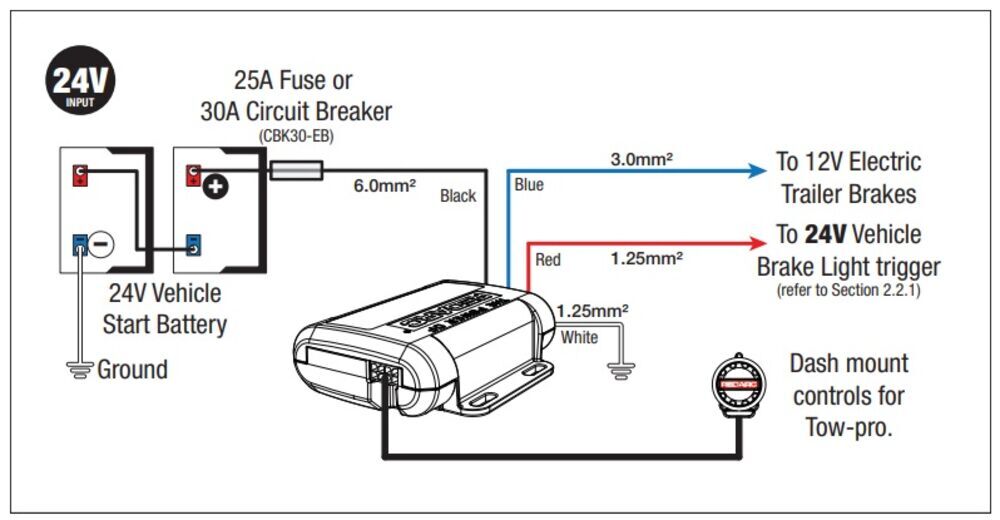
What is Proportional Braking?
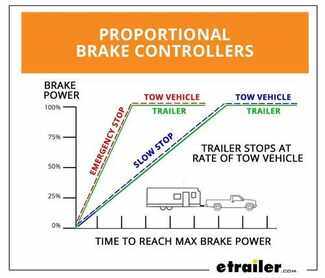
Proportional braking means that your trailer brakes mimic your tow vehicle's brakes. If you slam on the brakes in your vehicle, your trailer brakes will activate with the same intensity; if you brake lightly, your trailer brakes lightly too. The trailer's braking is in proportion to your vehicle's braking. This saves wear and tear on the tires and the brakes on both your vehicle and trailer.
The Tow-Pro Elite uses an internal 3-axis accelerometer to sense how your vehicle is braking so it can send the right amount of braking power to your trailer. It measures the inertia of your tow vehicle and activates the trailer's brakes to slow at the same rate. The result is uniform braking across your towing setup. No push-pull action - just smooth, proportional braking every time.
306300 Tekonsha Dual Plug, Direct Install Brake Control Wiring Harness Adaptor
Replaces Tekonsha 3063-P
TPH-017 Redarc Tow Pro Wiring Loom Adapter for Existing Tekonsha Brake Controller Harness Connection
EBRH-ACCV3 Redarc Tow-Pro Elite Trailer Brake Controller - Dash Mounted Knob - Hidden - Proportional Brake Controller
Replaces Redarc 331-EBRH-ACCV2
Installation DetailsCalifornia residents: click here

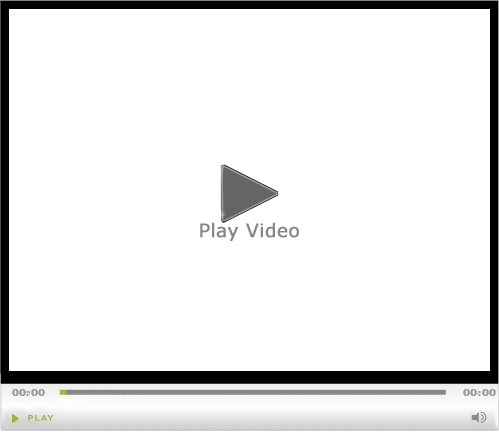
Videos are provided as a guide only. Refer to manufacturer installation instructions and specs for complete information.
Video Transcript for Redarc Tow-Pro Elite Trailer Brake Controller Installation - 2020 Mercedes-Benz Sprinter 2500
Hello, neighbors. It's Brad here at Etrailer. And today, we're taking a look and installing the REDARC Tow-Pro Elite brake controller on a 2020 Sprinter 2500. So here, we have it installed and it looks great. It's functioning wonderfully. And it's right here where I need it to be, right by the steering wheel so it's easy for me to get to this control when I need to manually apply the brakes.
And that's done just at the push of a button here and you can actually see it's illuminating, which is nice because it lets you know that it's actually getting that signal. And adjusting your gain is also gonna be easy here. With this nice back lit feature, you're gonna see it easy to actually get the number according to your gain. Now, if you've had previous brake controllers, a lot of them can be pretty large and clunky, and you're having to mount them here, which can kind of get in the way of your feet. Or you're mounting them down here to where it's not really ideal for applying the brakes when you need to.
Having it right here at my controls is nice because I can access it as soon as I need to. And that's kind of the beauty of the REDARC system. The box is hidden behind here. You can't see it. And all the controls are done here.
And while other brake controllers may have a readout with a screen, and some people like to have those features and be able to check on this, this is simple, easy, and it works without taking a bunch of real estate from your interior of the vehicle. As you can see, I'm moving. And it's really nice because it senses inertia and it's going to light this accordingly. So a small little brake is that light pink, but if I really need to jab on the brakes and it needs to throw those brakes on the trailer on, you're gonna get a nice red readout, letting you know that it's applying hard. Now, as far as install goes on the Sprinter van, this is really easy to do.
You can make it look nice and clean. Everything tucks up well. And there can be an option by getting two piggyback adapters. It's gonna make this plug and play, zero splicing required, and this can be done probably in under an hour. It's really easy and you'll be able to have a trailer brakes within a small period of time. And it's gonna look good in the process doing it. So the REDARC system is a great option for a brake controller that takes up a minimal amount of space as far as mounting it up. Some of your other ones are a little bit chunky and they can get in the way of your knees, and also can be troublesome to get a nice, clean mounting position on them. Well, this is really nice 'cause it's accomplished with this smaller little knob here. And this is gonna plug into our knob and then into our module. Now, off the module, you have this plug which comes with it. and you're gonna see that just plugs in and this is going to run to the wiring to make the connection. And that's fine. This should work okay, but to make it truly plug and play and just a lot easier without having to do any splices, that can be accomplished by getting this piggy tail. And that's going to jump to this style connector, which then will go to this connector. And that'll plug in here. And this is gonna go into the OEM tow package plug, making it nice and easy and not having to splice any wires. To begin routing it, we're gonna start with our Tekonsha wire here and we just need to find the factory plug that this is gonna go into. And so on some of the Sprinters here, you're gonna find that underneath the seat, tucked underneath this panel, you're gonna find a green plug. You may have to dig around a little bit for it, but to make it easy, it is color matched to the plug that we'll be putting it in. Now, there is only one way that it can go. You have a little locking mechanism up here and that's gonna go where this slot is. So go ahead and get that plugged in. Now, finding a path to route this up to our dash where we're gonna mount our brake controller, there's not a whole lot of great options here, so I just kind of routed it up and underneath the seat rail. And I've checked to make sure that the seat can actually move forward and back without any binding. So I'll make sure to zip tie that in place so it doesn't catch. And then the rest of the wire, I'm gonna actually run underneath the floor mat. And that way, we can route it up to our dashboard without any exposed wires. So I've gone ahead and I've attached it. Our customer here has a bracket for their center console, so I'm actually using that to kind of route it down. But just find a nice way to tuck this. And then you're gonna see underneath this center floor mat here, I'm gonna just tuck the wire in there. And then also, just following it and just kind of go under here. And that's gonna gain us access to route it under the dash. And then we're gonna go ahead and get some panels off and make the rest of our connections. So we have our wire around here, and just kind of planning ahead, we're gonna need to mount our module underneath here. And then you're still gonna have the plug that goes to the actual controller that gives you quite a bit of space to move around. So finding a nice spot to zip tie this up or make sure that it's not gonna be able to move is kind of crucial. And I think part of the easiest way to do this is we're gonna pull this panel off as we're gonna need to pop these out 'cause this is where our controller's gonna live. So let's go ahead and we'll get this panel off. And underneath, you're gonna see there's four T20 Torx bits underneath here that we'll go ahead and remove. Now, with those out, you're gonna want to simply kind of pry back here, try to get this plastic to pop. Just take your time. You might need to get this outer one here popped first. Let's do that. That one's pretty easy. A-ha! So as soon as I pull that panel off, I see that there's two more, so we'll go ahead and get those removed. Now, let's try again. Now, I know there's obviously gonna be some electrical connections here, so when pulling this out, just make sure you're not yanking too far out and damaging the wires. And when you get to this corner here where the cup holder is, this little tab wants to hang on there so giving this a slight tug back just to kind of gain a little bit of a clearance for that and pulling back on the clips should allow this to drop out. To make it a little bit easier and gain you a little bit more room, we can go ahead and unplug our light controls here. So I'm gonna push on this tab. It's kinda tricky to get to here, but push that. Push that tab down and then this little sliding lock will move out of the way. And then that should be able to come out here. And actually pushing that lock allows that clip to push out a little bit more here. And just like that, we have it undone. So now, I'm gonna take our other piggyback here that's gonna go to our actual module. And let's get this connected. We can now route the rest of this wire, just tucking it under here. And this still gives me a decent amount of room to work with for mounting up our module. Now, it seems like we have a gap here on the panel. I want to make sure that there's nothing behind here, but what we can actually do is get this, just take some self-tappers and mount this in place. And that's gonna be great for running our wire up to where our controls are gonna go. So let's go ahead and I think I'm gonna go grab some self-tappers, make sure there's nothing behind here, which it looks like we are good. We'll get this mounted up. Now, as far as routing this wire, obviously, it's next to the brake or the gas pedal, which I don't want someone's foot to get caught up in that. So what I've done is I'm gonna try to route this to a nice clean spot to where it's gonna be out of the way. And there is a little gap here on this plastic. I just kind of moved this heat right there, the HVAC, just to kind of gain some access, pull a little bit more slack. We'll tuck this and then this is gonna be nice for being able to put our piggyback there and attaching to our module. So now, you're gonna want to take your other pig tail and it's gonna be pretty easy here. We're just gonna clip those together. And this one is going to slide in and this locking tab is gonna be on the backside. And the rest of these wires here. I'll just tuck this excess the back up. And honestly, we're gonna have our plastic going down here so this should all be hidden. So now, go ahead and get your connector. This actually plugs into the module and then into the switch, so we'll just get this connected. Now, there was some twist ties that came with this. I would suggest holding onto one as we're probably gonna be bundling up quite a bit of this wire as our switch is gonna be located right about here. But for now, since I have my location, I'm gonna go ahead and grab my plastic panel and make space for our switch to mount up. So when mounting up your REDARC, you can kind of put it wherever fits your needs. Our customer here wants to actually mount it in this area 'cause you have these knockout panels here. And that way, you're not drilling into a whole plastic panel here. This is easy to replace if you ever want to take it out or replace it with something different. And it does come out with this little knockout panel and that's gonna live in here. I'm gonna go ahead and I'm gonna pop these out and figure out how we're gonna mount that up, and get it nice and clean looking. So to get these popped out, you have two tabs here. I'm just gonna pinch those, give a forward motion, and they should come out pretty easy. So if you are mounting to a different spot than these punch-out panels, you can go ahead and use this. I think though, I can omit that and really this outside edge here. It looks as if the switch is gonna fit in there pretty well. I'm gonna be doing a little bit of drilling and cutting just to kind of fabricate this in perfect, but it's gonna be a really, really good clean looking install once it's all done. So let me get this mounted in and I'll show you how I did it. So here our actual knob is. It's going to fit in this pretty well with minor modification. So the way I'm gonna do that, I'm just grabbing some snips here. I'm just gonna clip off these tabs all the way down to where we get a flat surface on the bottom. I can actually get these kind of clipped out here. So now, we're gonna need to get the rest of that webbing out. You can go ahead and use your snip to kind of get it in there a little more. And you're gonna want that close to flush because the way that this is gonna sit, it's actually gonna rest pretty well in the center there. And once we get that cleared out, you might want to take a file, get some of those edges out, and then we'll be putting a hole to actually get this amount through. So I'm gonna go through and I'm gonna cut this clean and get that filed out. Now, I've clipped quite a bit, as much as I can get my clippers in there. I think the rest of it, it's gonna be pretty easy to just kind of hold it in form. That way, it doesn't pull the plastic too much, but grab a pair of needle nose, and you can bite onto that plastic tab, and then just kind of twist off the rest of that. Really, we're just trying to make sure we have enough cleared out space for this to slide in. So you want to just kind of test fit it just to see if you can get that button to press. And then you'll know that you at least have enough cleared out for that. So again, needle nose. They're gonna be big help here and just kind of work at it. If you have a small file, that's also gonna be a really good way to do that as well. So I've gone ahead and cleared this plastic out. And that's really gonna make it nice and easy for our little controller here to slide in, but we're gonna have to make a little hole in order for this to go through. Now, I'm gonna start with a smaller bit just so it's a little bit easier for it to drill through without cracking the plastic. And then we're gonna need to space it out large enough. This collar actually goes in to tighten this into place. And so we're gonna want to make sure that we, we'll make that hole a little bit bigger, but not too large. And that way, it has a nice secure fit. So first, let's get our pilot hole in. I'm gonna pick right at the center here. And we have our hole mounted there. So I'm gonna just kind of test fit this through, just gonna see if it's lining upright. And it looks like that's gonna be a great spot for it, so I'm going to go ahead. I'm gonna largen this hole. And so I've found a drill bit here and it looks to be about the same diameter as this hole. And that's gonna allow this collar to slide through. So really, if you want to, you can make sure that your drill bit's the same size of that collar, and that should be a good fit. Now, we're gonna enlarge the hole here. You might want to put this on a vice if you have one available. And that way, it's gonna not spin around on you. I'll go ahead and get these burrs out real quick and give it a nice little test fit. So now, I'm going to put our switch through and we're gonna test fit to make sure that the collar actually fits on there. And that seems like it's going to be a perfect fit. So now, I haven't tightened this down. I want to actually, we have our sticker that comes with the kit and the sticker is really just kind of goes around. And when this illuminates, it makes it a little easier to see, but you see this little tab, that's gonna be your indicator of where it's actually going to be at on it setting. So this one, the sticker is a little bit wide for this knockout plug. So I'm actually going to trim this up, but I want to figure out where our dead center is, or at least where we want our indicator. And the best way to do that, just turn it counterclockwise all the way and that's gonna be zero. And then this little controller knob here can kind of go however you want. If you want the REDARC to face one way, that's fine. But I think since it's gonna be mounted up, it's going to be easy for the driver to see that the indicator zero here is going to be great. And then that way, when you adjust, you'll be able to see those numbers nice and easily. So I'll go ahead and I'll take our collar off. So here, we have it installed and it looks great. It's gonna be easily accessible for the driver to not only see, but to operate. And it's nice being able to use these little punch-out panels because you're not really having to drill in to the main plastic of the vehicle. So now, we have this installed. All we gotta do is make our connection from our REDARC module. So we'll go ahead and plug that in. And then this other end is simply going to go to the back of our brake controller. And pushing the button, we see the light come on. So all that's really left to do is get our panel put back in place, and we need to go out and get this calibrated, and then we'll be ready to tow. And what we're doing here is going to be getting up to 20 miles per hour, and then braking, and then repeating that process until you'll see this light will actually turn blue and it's gonna stay solid. Now, you're gonna need to hook up to your trailer. Or if you have a seven pole tester with a box that gives the output, that's gonna be ideal, but it does need to see a load on here in order for it to be calibrated. So if you're installing this and don't have your trailer available, I definitely suggest when you get to your trailer, the first thing you're gonna want to do is calibrate to make sure this is working. So let's take this out. We'll get some braking going on. Now, the reason we're doing this is because the module box is gonna try to find its location. It can be mounted really in any orientation, but doing the calibration test kind of gives it an idea of where it's actually gonna live in the vehicle and how that motion's gonna be working during the braking. So getting a little more speed, one of the brakes again. So there, we had after about six or seven times of braking, we have our solid blue light. So we are officially calibrated. So once you hook up to your trailer, all you need to do is adjust your setting of brakes, and you'll be good to go, and ready to have your brakes applied on your trailer at the push of a button. And that was the look and installation of the REDARC Tow-Pro Elite brake controller on a 2020 Mercedes-Benz Sprinter 2500. Thanks for watching..
Customer Satisfaction Score:
98% were satisfied with this product
2% of customers were not satisfied
- Wrong item was ordered
- Alternate product found
Ratings & Reviews
4.8
1672 reviews
See what our Experts say about this Redarc Trailer Brake Controller
- Recommended 7-Way Connector for a 2025 Toyota Grand Highlander Hey Kyle, congrats on the new SUV! I am a big fan of the Redarc brake controllers for the exact same reason. The Universal Installation Kit for Trailer Brake Controller item # ETBC7 plugs directly into your 4-way connector and requires you to run a brake controller, power, ground, and accessory wire. It's got all the fuses and wiring you need to complete the installation. For this set up you would need the Redarc Tow-Pro Elite Brake Controller item # RED44FR. The Tekonsha OEM Replacement...
view full answer... - What Brake Controllers are Compatible With Tekonsha 7-Way Harness TK24FR on 2020 Kia Sedona? The Tekonsha OEM Replacement Vehicle Wiring Harness # TK24FR for your 2020 Kia Sedona is going to come with a Tekonsha brake controller connector. So you will be able to use any Tekonsha Controller like the P2 # 90885 or P3 # 90195. Or the Redarc Tow-Pro Elite Brake Controller # RED63RR will come with the Tekonsha Adapter # 331-TPH-017 so you can use it with a Redarc controller. If you have a Curt or other brand controller you would need to cut off the connector to use it with your controller.
view full answer... - Plug & Play Harness For Redarc Tow-Pro Elite in 2020 Acura MDXHi John, We can get your 2020 Acura MDX set up with the Redarc brake controller and there is a plug-and-and play harness that will work. You were also correct about the 7-way, and that's what will allow you to use the plug-and-play harness. First, lemme go ahead and list out the parts you need: - Redarc Tow-Pro Elite Brake Controller for Tekonsha Harness # RED63RR - Tekonsha Plug-In Wiring Harness # 3028-P - T-One Vehicle Wiring Harness with 7-Way Trailer Connector # 118289 The Tow-Pro...
view full answer... - Redarc Brake Controller To Replace A Tekonsha In A 1999 Ford F350We can definitely help with that, Bobby! You didn't mention which Redarc controller you were looking at, so I have three option for your 1999 Ford F350 listed below: Redarc Tow-Pro Liberty Brake Controller w/ Universal Wiring Harness - Dash Knob - Proportional # RED52VR Redarc Tow-Pro Elite Brake Controller w/ Universal Wiring Harness - Off-Road Mode - Proportional # RED44FR Redarc Tow-Pro Elite Brake Controller for Tekonsha Harness - Off-Road Mode - Proportional # RED63RR The first...
view full answer... - Parts Needed to Install Redarc Tow-Pro Elite Brake Controller on 2021 Chevy Silverado 1500It sounds like you have the factory tow package on your 2021 Chevy Silverado 1500. The # RED63RR is a good start since it comes with the Tekonsha Adapter # 331-TPH-017 for the Tow-Pro Elite. The only other thing you will need is the Tekonsha # 3064-P. One end of this wiring harness will connect to the adapter and the other will plug into your factory tow port under the dash. I have attached an installation video for your reference.
view full answer... - Does Redarc Brake Controller Fit 2021 Chevy Silverado 1500Hey Jeff, thanks for the question and yes, there is a Redarc brake controller that fits your 2021 Chevy Silverado 1500. It's the Tow-Pro Elite, with the correct part number and adapter being the following: - Redarc Tow-Pro Elite Brake Controller for Tekonsha Harness # RED63RR - Tekonsha Plug-In Wiring Adapter # 3064-P This will allow you to just plug the controller in so you don't have to do any wiring. You made a really nice choice with the Redarc controller as well, Its small control...
view full answer... - Should LED be Solid Blue Right When Installing Redarc Tow-Pro EliteSince you haven't finished calibrating the Redarc Tow-Pro Elite # RED63RR yet it won't be solid blue right away. Once you calibrate it will be on all the time if you are in proportional mode. As for the best method there isn't one; you can with or without a trailer attached like you mentioned and it truly won't make any difference at all. It's easier without a trailer attached (because you aren't hooking up the trailer) so that's what most people do.
view full answer... - Parts Needed to Install Redarc Tow-Pro Elite on 2015 Toyota TundraHey Harry! The # RED63RR is just the Redarc Tow-Pro Elite with a Tekonsha adapter that would allow you to use a separate Tekonsha wiring harness on your 2015 Tundra. Are the hitch and 7-way wiring factory? If so, it is safe to assume you have the tow package meaning the Redarc Tow-Pro Elite Brake Controller w/ Custom Harness # RED42CR is the part you need. This comes with the brake controller along with the custom wiring harness for the factory port under your dash. If you have a blank...
view full answer... - Proportional Brake Controller Recommendation for Motorhome with Air BrakesI really like the Redarc Tow Pro Liberty part # RED52VR as it's proportional like you mentioned, is compatible with vehicles that have air brakes, and it only puts a small knob on the dash of the vehicle.
view full answer... - Recommended Brake Controller for a 2022 Chevy Silverado 1500, 2500, and 3500To add a brake controller to your 2022 Chevy Silverado 3500 you are going to want the Redarc Tow-Pro Elite Brake Controller item # RED63RR. This brake controller has a unique installation method where you can mount the control knob on your dash or console and hide the main unit out of sight. It is perfect for towing as you do not have to worry about banging your knee on a bulky brake controller. This is a proportional brake controller that automatically adjusts your trailer's braking...
view full answer... - Parts Needed For Brake Controller Installation On a 2021 Ford E-450 Cutaway Chassis For Class C RVTo verify if your 2021 Ford E-450 cutaway chassis for your Class C motorhome is pre-wired for a brake controller you will need to remove the storage slot in the top of your dash. I have included a install video below that shows how to remove the storage tray to access the connector at the 16:30 time in the video. With the factory connector you can use the Tekonsha Plug-In Wiring Adapter # 3034-P to install the Redarc Tow-Pro Elite Brake Controller # RED63RR. This will allow you to add...
view full answer... - Best Brake Controller for a 2023 Chevrolet Suburban w/ the Factory Towing PackageThe best brake controller for your Suburban is going to be the Redarc Tow-Pro Elite Brake Controller item # RED63RR. This is a proportional brake controller that activates your trailer's brakes when your Suburban decelerates. The reason the Tow-Pro Liberty is the best option is because of its unique installation method where the only visible portion is the control knob that's about the size of a nickel. The main unit is hidden away inside your dash to be completely out of the way and out...
view full answer... - Recommended Trailer Brake Controller For a 2023 Jeep GladiatorI recommend the Redarc Tow-Pro Elite Brake Controller # RED63RR for your 2023 Jeep Gladiator. The Wiring Adapter # 3073-P will allow you to connect this controller directly into your factory wiring. This Redarc controller allows you to switch between proportional brake activation which is best when driving on road or a user controlled mode which comes in handy if you do an off-roading with your Gladiator. It also uses a small dash mounted control knob so you do not have a large control...
view full answer... - Recommended Brake Controller for a 2023 Chevy Silverado 2500 w/ Factory Tow Package To add a brake controller to your 2023 Chevy Silverado 2500, I recommend the Redarc Tow-Pro Elite Brake Controller item # RED63RR. This brake controller has a unique installation method where you can mount the control knob on your dash or console and hide the main unit out of sight. The Tow-Pro Elite is a proportional brake controller that automatically adjusts your trailer's braking based on the deceleration of your Silverado. Since your Silverado has the tow package you will not need...
view full answer... - 7-Way Connector and Brake Controller For a 2021 Ford Bronco Wildtrak Without Tow PackageYes, the Tekonsha OEM Replacement Vehicle Wiring Harness w Brake Controller Adapter # TK55VR is specifically designed to be used on your 2021 Ford Bronco Wildtrack that did not come with a factory tow package. This kit will allow you to install the Redarc Tow-Pro Elite Brake Controller # RED63RR onto your Bronco and give you a clean factory look. A Mounting Bracket # 18138 will allow you to mount the 7-way connector to a Draw-Tite Max-Frame Trailer Hitch Receiver # DT37GR with its mounting...
view full answer... - Recommended Brake Controller For A 2024 Chevy Silverado 1500 For your 2024 Chevy Silverado 1500 I recommend the Redarc Tow Pro Elite # RED63RR. You can use it along with the Plug in Adapter # 3064-P for a plug and play install, since you already have the factory tow package. The Redarc controller is going to be completely hidden behind the dash. All you will see is the control knob, which is about the diameter of a nickel. So it will have a very clean factory look, and the control knob is very easy to use once you get the hang of it. I have linked...
view full answer... - Can the Redarc Tow-Pro Trailer Brake Controllers Be Mounted With Double Sided Tape or VelcroYes, the Redarc Tow-Pro Elite Brake Controller # RED63RR you were looking at or the Redarc Tow-Pro Liberty Brake Controller # RED24FR can be mounted with double sided tape or heavy duty velcro. You must make sure to keep it away from any areas that may be exposed the heat or moisture, where it will not move. If you choose these meathods I do recommend checking the controller more regularly to ensure it does not move.
view full answer... - Brake Controller and Wiring Recommendations for a 2023 Ford MaverickTo add a brake controller to your 2023 Ford Maverick I recommend installing the Tekonsha OEM Replacement Vehicle Wiring Harness w Brake Controller Adapter # TK95VR to get the wiring and then the Redarc Tow-Pro Elite Brake Controller for Tekonsha Harness # RED63RR for the brake controller end of things. The Tekonsha wiring kit gets you all of the functions you need for your trailer functions and then the Tow-Pro Elite controller can be installed virtually anywhere in your truck cab and...
view full answer... - Recommended Brake Controller for a 2022 Ford Explorer w/ Factory Towing Package Since your 2022 Ford Explorer has the factory tow package you can use the Tekonsha Plug-In Wiring Adapter for Electric Brake Controllers item # 3035-P to install the Redarc Tow-Pro Elite item # RED63RR. This adapter will connect to the one that comes with the Tow-Pro Elite and allow you to plug into a port located behind the appearance panel on the driver's side. Just remove the two screws to get the panel to drop, you are looking for a grey plug. The grey plug is sometimes taped together...
view full answer... - Can You Install Redarc Tow-Pro Elite Brake Controller on 2022 Ford Bronco Without SplicingIn order to install the Redarc Tow-Pro Elite Brake Controller part # RED63RR on a 2022 Ford Bronco you'll first need the Tekonsha Plug-In Wiring Adapter for Electric Brake Controllers part # 22292 which will make for a plug and play install up at the front of the vehicle. Then, you'll need a 4-way and 7-way adapter at the rear for which I recommend both the Curt T-Connector Vehicle Wiring Harness part # C42WR and 4 to 7-Way with 4-Way Adapter part # ETBC7. The factory brake controller wires...
view full answer... - Wire Harness Required to Install Redarc Tow-Pro Elite Brake Controller On a 2020 Jeep GladiatorFor your 2020 Jeep Gladiator with the factory tow package you will only need the Plug-and-Play Wiring Harness # RED93RR to attach the Redarc Tow-Pro Elite Trailer Brake Controller # RED44FR. This harness will have 2 connectors, one for the Jeep side and one for the Redarc. The Redarc Tow-Pro Elite Brake Controller for Tekonsha Harness # RED63RR that you found does require the Tekonsha Custom Wiring Adapter # 3073-P so you will have 2 different adapters to connect the controller making...
view full answer... - 7-Way Vehicle Wiring Harness and Trailer Brake Controller For a 2023 Ford Transit T350 VanYou will need to select either the 7-Way Wiring Kit # 22116 if your 2023 Ford Transit T350 has dual rear wheels or the 7-Way Wiring Kit # 22114 if your Transit only has the single rear wheels. Both kits include the wiring for connecting to a Tekonsha brake controller like the Prodigy P3 # 90195. If you prefer a hidden brake controller the Redarc Tow-Pro Elite Brake Controller # RED63RR includes an adapter allowing you to connect directly to the Tekonsha wiring harness.
view full answer... - Parts Needed To Install 7-Way Connector and Redarc Tow Pro Elite On a 2022 Ford Bronco BadlandsThe Tekonsha OEM Replacement Vehicle Wiring Harness # TK55VR will provide you with the wiring and connector to install a 7-way and brake controller on your 2022 Ford Bronco Badlands with the LED tail lights. The kit includes the wiring and fuses needed to power the trailer lights and the charge line on the 7-way. You will then be able to connect the Redarc Tow-Pro Elite Brake Controller # RED63RR inside your Bronco. This controller includes the wiring adapter to connect to the Tekonsha...
view full answer... - Best Trailer Hitch Receiver and Wiring For a 2023 Ford Bronco I recommend the Draw-Tite Max-Frame Trailer Hitch Receiver # DT37GR for your 2023 Ford Bronco. I feel this is the best receiver as it has an extended receiver to give you the clearance needed to carry hitch mounted accessories and clear the rear spare tire. The Tekonsha 7-Way # TK55VR will allow you to tow most trailers. It allows you to install a Brake Controller # RED63RR if you are towing a trailer with electric brakes.
view full answer... - Brake Controller Install On 2019 Mercedes-Benz Sprinter 2500 Without Green Plug Under the SeatAs long as your 2019 Mercedes-Benz Sprinter 2500 has a factory plugin connection point for the adapter part # 3063-P you will not need to make any modifications to the adapter, it will plug right in into the factory plug and the other end to a Tekonsha, TrailerMate or Draw-Tite brake controller. The plug that the harness will use is located under the driver seat. It is a green four pin plug which can be seen in the attached photo. If you do not have this factory plug then the green plug...
view full answer... - Where Is The Brake Controller Plug On a 2019 Mercedes-Benz Sprinter 2500Yes, the Tekonsha Custom Wiring Adapter for Trailer Brake Controllers part # 3063-P is the correct harness that will allow you to use the Tekonsha Prodigy P3 Trailer Brake Controller part # 90195 on your 2019 Mercedes-Benz Sprinter 2500 without splicing. The plug that the harness will use is located under the driver seat. It is a green four pin plug which can be seen in the attached photo.
view full answer... - Does the 2024 Mercedes-Benz Sprinter 2500 have the Plug-In for Brake Controller Harness?Hello Brad, I was able to see the video that you referenced that our Brad did. His video is on a 2020 Sprinter 2500, we know the plug-in for the brake controller was on the 2020, the information I am finding on the 2024 is that it may or may not be there. The best way to know if it is there or not, is to go look. I do not have a 2024 Sprinter 2500 here right now to go look for myself, and we have not installed one on that year either for me to watch the video. I am showing that if it...
view full answer... - How to Find the Brake Controller Port on a 2019 Thor Quantum KM24 w/ the Factory Tow PackageHey Bryan. The brake controller port on the 2018 Mercedes Sprinter 3500 were only installed beneath the front driver's seat, like in the picture I attached below. If it was routed somewhere else you'd need to find the green 4-pin connector and follow it from there. Like you said this brake controller port was included with the factory tow package. Are you the original owner? Could someone have already installed a brake controller and removed it but left the plug in adapter item # 3063-P?...
view full answer... - Recommended Plug and Play Brake Controller Harness for a 2024 MB Sprinter 2500 w/ the Tow PackageHey Nick, congrats on the new Sprinter. The Tekonsha Custom Harness item # 3063-P does fit the green connector that is under your seat in your 2025 Mercedes Benz Sprinter 2500. It's compatible with the E98 prep package option as shown in the picture below. The item # 3063-P will allow you to install the Tekonsha BRAKE-EVN Trailer Brake Controller item # TK28BR without having to cut or splice wires. What kind of trailer are you pulling? The item # TK28BR doesn't work with all braking...
view full answer... - Troubleshooting No Power To Brake Controller Using Factory Wiring Harness on Sprinter VanThe Tekonsha Prodigy P3 Trailer Brake Controller # 90195 along with the wiring harness # 3063-P is all that is needed to add your controller to your Sprinter with Factory Trailer Plug. Since you are not getting power, you should check fuse F55 which is a 30 amp fuse.
view full answer... - Brake Controller Solution for 2023 Mercedes MetrisWe do have the brake controller solution you are looking for your 2023 Mercedes Metris. The install harness part # 3063-P will connect to your factory brake controller wiring and will let you install a Redarc brake controller like the Redarc Tow Pro Liberty part # RED24FR. This is a really nice brake controller that only puts a small knob on the dash and performs really well.
view full answer... - Brake Controller Port Location on a 2017 Mercedes-Benz Sprinter 2500According to my research, if your 2017 Mercedes-Benz Sprinter 2500 came with a factory 7-way trailer connector then you will have the brake controller connector pre-wired. This pre-wired connector should be under the driver side seat which you can see in the attached photo. The connector is green with four pins inside. Once you locate this connector you can then install the Tekonsha Prodigy P3 Trailer Brake Controller part # 90195 using the Tekonsha Custom Wiring Adapter for Trailer Brake...
view full answer... - Does Brake Controller Install Harness for 2017 Mercedes Sprinter Require Additional WiringThe brake controller install harness part # 3063-P is the correct install harness for a brake controller in your 2017 Mercedes Benz Sprinter 3500. You would not need to do any other splicing or wiring beyond plugging the other end of the connector into a brake controller. For a brake controller I would recommend the Prodigy P3 Brake Controller part # 90195. This is our best selling brake controller because of how well it works and how easy it is to setup. This is a proportional brake...
view full answer... - Trailer Brake Controller Installation for 2019 Freightliner Sprinter 3500 With Tow PackageI recommend the Tekonsha Prodigy P3 Trailer Brake Controller part # 90195 and wiring adapter part # 3063-P for the 2019 Freightliner Sprinter 3500 with tow package. The Tekonsha Prodigy P3 Brake controller is a great option for the Sprinter because of it's storable settings that allows you to customize the settings for multiple trailers and heavier/lighter loads if you tow more than 1 trailer. The LCD display also display easy to decipher troublehsooting codes if something goes wrong with...
view full answer... - Recommended Brake Controller for a 2024 Sprinter 3500 Hey Michael, I can not see in your cart but I can see some of the parts you were looking at. I checked with Tekonsha and a few other brake controller manufacturers and there are no plug and play adapters, like item # 3063-P, that fit the 2024 Mercedes Sprinter 3500. The OEM brake controller install port under the seat stopped being installed after the 2022 model year. The Redarc Tow-Pro Liberty Brake Controller w/ Universal Wiring Harness item # RED52VR, you were looking at comes with...
view full answer... - Brake Controller Recommendation for 2025 Sprinter 4500 MercedesHey Dave, the install harness part # 3063-P does fit to the green connector that is under your seat in your 2025 Mercedes Benz Sprinter 4500 and would work great with the P3 part # 90195 which is widely considered to be the best controller around. I attached a link on this page that will help you find the connector as well.
view full answer... - Parts Needed For Installing Trailer Hitch Receiver & Wiring For Brake Controller 2022 Sprinter 2500Since your 2022 Mercedes-Benz Sprinter 2500 did not come with the factory tow package you may not have a connector for the brake controller under the seat or under your dash. I have linked an installation video for the Redarc # RED44FR at the bottom of the page which will show you where the connector is and if you can wire it in using the Pigtail # 3063-P and Adapter # 331-TPH-017. As I see you were looking at the Prodigy P3 # 90195 it would only require the Pigtail # 3063-P which is long...
view full answer... - Brake Controller and Install Harness for 2022 Mercedes Sprinter RVThe Redar Tow Pro Elite part # RED44FR can easily install on your 2022 Motorhome built on a Sprinter chassis with the part # 3063-P which plugs in right under the dash. This controller is really nice as it uses an inertia sensor to detect how hard you are applying the vehicle brakes and applies a similar amount on the trailer brakes. It also only requires putting a small control knob on your dash instead of a larger box like a traditional controller. I attached an install video for the...
view full answer... - Brake Controller Installation on 2016 Mercedes-Benz SprinterAssuming your Sprinter has the factory tow package with the 7-way at the rear bumper, in addition to the # RED24FR Redarc Tow-Pro Liberty Brake Controller, you'll also need the # 3063-P wiring harness and the # 331-TPH-017. The connector to install the controller is located under the driver's seat as shown in the provided photo. If the Sprinter doesn't have the factory 7-way, you can install one using part # TK22115, you'll also need the # 331-TPH-017 adapter mentioned above.
view full answer... - Is There Difference Between Prodigy Brake Controller Part Numbers 90885C and 3063-9/3063-4The two part numbers are basically other retailers part number versions of the Prodigy P2 part # 90885 and # 3063-P. There is no difference.
view full answer... - Trailer Break Control Installation for Tekonsha Prodigy P3 on 2019 Mercedes-Benz Sprinter 3500 According to my research, if your 2019 Mercedes-Benz Sprinter 3500 came with a factory 7-way trailer connector you will have the brake controller connector pre-wired. This pre-wired connector should be under the driver side seat which you can see in the attached photo. The connector is green with four pins inside. Once you locate this connector you can install the Tekonsha Prodigy P3 Trailer Brake Controller part # 90195 using the Tekonsha Custom Wiring Adapter for Trailer Brake Controllers...
view full answer... - How To Install a Brake Controller on 2017 Mercedes-Benz Sprinter 3500You can hard-wire in a brake controller, and it seems that there are not a lot of the Sprinter 3500 models that are pre-wired, at least from what I've seen in my research. I have not seen any reports that this isn't possible, and we even have an installation video to walk you through the process. The way to find out whether or not the plug is present by using a circuit tester like the # PTW2993 and testing for a hot wire when the brake is pressed- it's possible that one of the plugs that...
view full answer... - Where is Brake Controller Install Connector on 2020 Mercedes Benz Sprinter 3500Your 2020 Mercedes Benz Sprinter 3500 with the factory tow package does have a brake controller install port like what the part # 3063-P is designed to plug in to. On your Sprinter you will find the harness underneath the driver seat. It will be a green connector you are looking for like what you see in the attached picture. Then for a brake controller the Brake EVN # TK63VR would be a really great option that is very reliable and performs great.
view full answer... - Are There Instructions To Route Tekonsha Brake Controller Harness On Mercedes Sprinter 2500 The Tekonsha Custom Wiring Adapter for Trailer Brake Controllers part # 3063-P which is a fit for a Tekonsha Trailer Brake Controller like the Prodigy P3 part # 90195 on a 2018 Tiffin Wayfarer Motorhome with Mercedes-Benz Sprinter 2500 Chassis does indeed plug-in under the seat. In order to route the harness up to the dash where you would ideally be mounting the brake controller you'd need to find a path free from moving components. That said, the manufacturer does not provide exact instructions...
view full answer... - Where Is The Brake Controller Port Located on the 2019 Mercedes-Benz Sprinter 2500 For 3063-PThe brake controller adapter part # 3063-P that is used with the Tekonsha Voyager Brake Controller part # 39510 for the 2019 Mercedes-Benz Sprinter 2500 plugs in underneath the driver's seat. There is a green plug that you plug the adapter into. I have attached a photo for your reference.
view full answer... - Where is the Trailer Brake Controller Plug on a 2020 Mercedes-Benz MetrisThe trailer brake controller plug on a 2020 Mercedes-Benz Metris is located on the driver side behind the center console, under the sound deadening mat in the top left of the passenger footwell. I have attached a photo of this as well. I recommend using the Tekonsha Prodigy P3 Trailer Brake Controller part # 90195 with Tekonsha Custom Wiring Adapter for Trailer Brake Controllers part # 3063-P which makes for a plug-in-play install. If you don't want to do all the work finding the connector...
view full answer... - Parts Needed to Install Brake Controller on 2019 Mercedes-Benz Sprinter 2500 With 7-WaySince your 2019 Mercedes-Benz Sprinter 2500 has the factory 7-way, that means you'll have the factory tow package, so I assume by "wiring" you are referring to the wiring adapter needed to plug into the brake controller (it will plug into the green port under your driver's seat as in the accompanying photo). The correct part for your '19 Sprinter 2500 is the Tekonsha Custom Wiring Adapter # 3063-P. Then for a brake controller that works with that adapter, there are a couple options I...
view full answer... - Parts Needed to Install Brake Controller in 2023 SprinterI checked with Tekonsha and a few other brake controller manufacturers and they state that your 2024 Mercedes Sprinter 3500 does not have an OEM brake controller install port under the dash like previous models so you would have to hardwire in the Prodigy P2 # 90885 with the universal install harness it comes with and the brake controller install kit part # 5506 which wires to the OEM 7-way you have.
view full answer... - Can A Redarc Tow-Pro Liberty Be Installed In A 2019 Ford E-Series Cutaway Hey Gary, Brake controllers are pretty universal so even though it's not listed as a fit you would still be able to get the Redarc Tow-Pro Liberty # RED24FR installed in your Ford. To make the installation super easy you'll want to pick up the Tekonsha Plug-In Wiring Adapter # 3034-P. This will plug into your vehicle's wiring so that you don't have to cut and splice or run wire back to the 7-way. To connect this to the brake controller you can either cut off the Tekonsha connector and...
view full answer... - Does 2023 Winnebago Revel Have Brake Controller Install Connector Under SeatHey Derek, your 2023 Winnebago Revel would have been made on a 2022 Mercedes Sprinter 2500 chassis which for sure does have the brake controller port under the seat like you mentioned. The Redarc Tow Pro Elite part # RED52CR is a really nice brake controller that comes with the correct harness that plugs into this port and only actually puts a small knob on the dash of your Sprinter so it's a really nice option.
view full answer... - Looking for Dealer LocatorHey David, we have an installer locator that would be helpful but I would need to know what it is you are wanting to install so that I send you the right link.
view full answer...
Do you have a question about this Trailer Brake Controller?
Info for this part was:




At etrailer.com we provide the best information available about the products we sell. We take the quality of our information seriously so that you can get the right part the first time. Let us know if anything is missing or if you have any questions.








































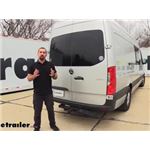

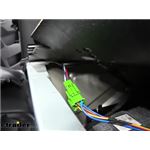
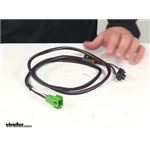

































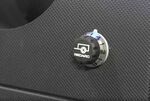
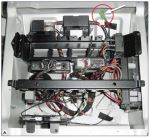
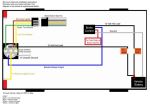
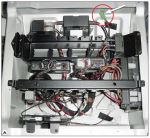



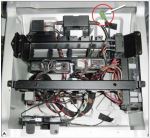
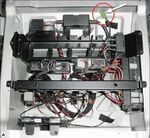
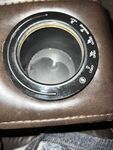



Thank you! Your comment has been submitted successfully. You should be able to view your question/comment here within a few days.
Error submitting comment. Please try again momentarily.